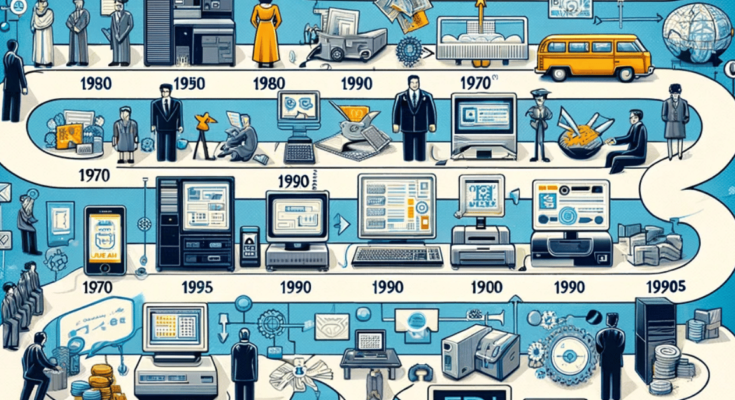What are EDI payment? First, what exactly is an EDI ? EDI, which means Electronic Data Interchange is a way to exchange documents and transactions electronically. It has upended the business world, changing forever how companies communicate and do transactions.
The early Days of Edi Payments:
From the 1960s onward businesses began to investigate electronic means of simplifying processes. In the beginning, it was only about eliminating paper and accelerating transactions. Businesses began to use the simplest forms of electronic communication for sending out invoices, purchase orders and other business documents.

EDI PAYMENT RISE 1970 AND 1980:
Tech developments of the 70s and ‘8os EDI payment also evolved along with advances in technology. In the US, for instance, this period introduced standards such as ANSI X12 that helpedthe EDI process become more efficient and widespread. For businesses, EDI really began to produce results in lowering errors and saving time while reducing costs.
info…..EDI Payments Reducing Costs and Increasing Efficiency
SOME FACTOERs FUELINIG EDI PAYMENTS GROWTH:
- The Internet era and EDI When the internet came to life in the 1990s, another stage of change began for EDI payment. Internet added speed and lowered cost, so even small companies could use EDI. Technology democratization brought EDI within the reach of small and medium-sized enterprises.
- Today, EDI payment are an inseparable ingredient of the global business melting pot. Technology has made them more user friendly and secure. Cloud-based EDI is now standard, with more flexibility and scalability. Prime focus has been security, with solidprotocols in place to secure the transmission of sensitive data.
- EDI in e-commerce Much of the recent evolution in EDI has been driven by e- commerce. Therefore, in response to the rapid growth of online shopping and digital payments, EDI payments has evolved accordingly. It is an integral part of automating order-to-cash and procure-to pay procedures, helping to make ecommerce more streamlined and foolproof.
- EDI and Mobile Technology One particularly exciting development in the realm of EDI is that they are integrating with mobile technology. With smart phones becoming the rule, EDI systems have been extended to permit mobile access so that enterprises can monitor transactions in the palm of their hands. Working on-the-go increases flexibility and efficiency even further.
- Futuer trends of Edi Looking forward, EDI payments will become even more entwined with the new era of emerging technologies such as blockchain and artificial intelligence. And blockchain, in particular, offers the potential for even more secure and transparent transactions. through AI, EDI processes would become more intelligent and responsive.
- Read me…..EDI Payments a Game Changing Innovations
- Environmental Impact EDI‘s environmental impact is often overlooked. By cutting down on paper-based commercial exchanges, EDI is helping create a more environmentally friendly business climate. This ties in with world efforts to lower carbon footprints.

- Globalization impact In today’s global economy, EDI payments have become an important phenomenon in international trade. They help connect businesses in various parts of the world to freely exchange goods and services, ironing out differences between languages as well as business practices. The internationalization of EDI has enabled the more convenient trading relations and played an important role in developing oversea business.
- Compliance and Regulatory Landscape As EDI have developed, so has the compliance and regulatory environment. Global regulations have been established to provide for the security and assurance of electronic transactions. EDI-using businesses have to keep track of these regulations in order to make sure they stay compliant, and this has resulted in more advanced kinds of EDI software capable mof adapting itself as the permissions structure changes.
- Business relations under the electronic umbrella EDI has had a huge impact on business relationships. Through streamlining transactions, EDI has helped establish better relationships between businesses. But it’s not just about efficiency; there is also the issue of building up trust and reliability in business relationships.
- Customer Experience In the customer-oriented business environment of modern times, EDI payment plays an invaluable role. More rapid and accurate transactions result in higher customer satisfaction. Businesses are therefore able to respond more quickly to customer needs, and manage their supply chains better which means that customers will receive the products or services in time.
- Get info…EDI Payments Transforming Financial Transactions
- EDI comes with its challenges Despite all the benefits, however, implementing and managing EDI can be a challenge–especially for smaller businesses. Setting up an EDI system can be expensive and complicated. But, as cloud-based and on-demand EDI payment solutions have become more commonplace, these barriers are gradually falling away. These technologies make it possible for even the smallest businesses to participate in EDI with major customers or suppliers alike.
- Combining EDI with other business tools To make the most of its benefits, EDI systems are increasingly being made to work together with ERP ( Enterprise Resource Planning ) and CRM ( Customer Relationship Management) software. It enables a more comprehensive approach to business and brings greater consistency between different areas of the business.
- EDI and Data Analytics Another development on the busy front of EDI is its combination with data analytics. The huge volumes of data generated by EDI transactions provide businesses with valuable clues about market trends, customer behavior and supply chain efficiency. Such a data-driven approach can result in better planning and decision making.
- More info ….EDI payment security Corner of digital transactions.
- The Human Factor Despite being a technology-enhanced process, the human factor is still important. Developing a trained, competent staff is an important element in installation and running such systems. The development of more advanced EDI systems only highlights the need for human expertise to manage and interpret data.

Conclusion:
EDI are a testament to the flexibility of technology and its power over business. From shop-floor basis to modern arranger of global trading, EDI has consistently adapted and altered itself with the changing requirements and growing levels of managerial personnel effectivenesss. Looking to the future, we can see clearly that EDI payments will continue as a key means of helping businesses conduct trade and create common growth. For anyone engaged in business, the history and development of EDI is not an extension of awe at some technological wonder. It is rather to understand that there exists such fundamental instrument for modern commerce.




